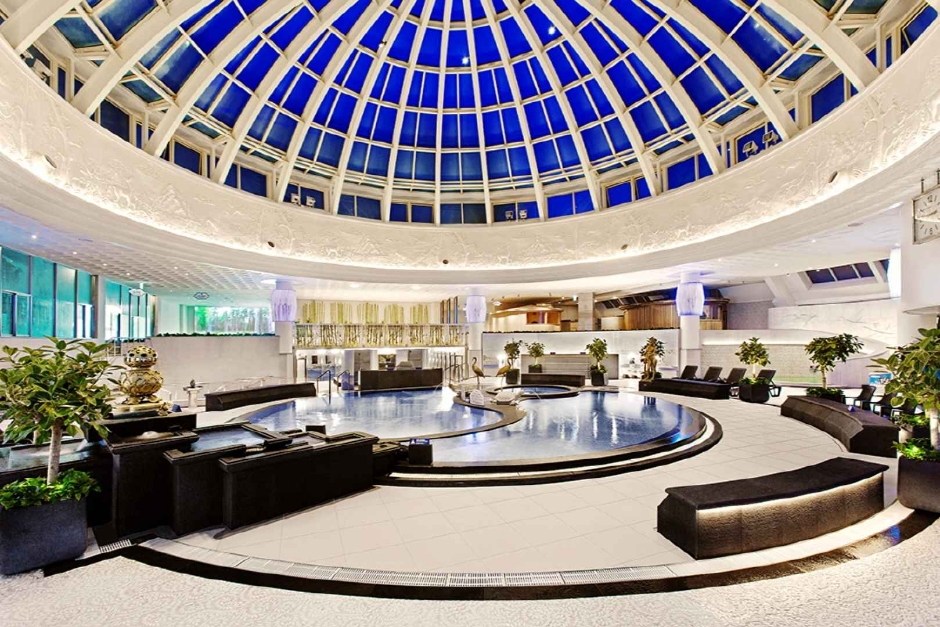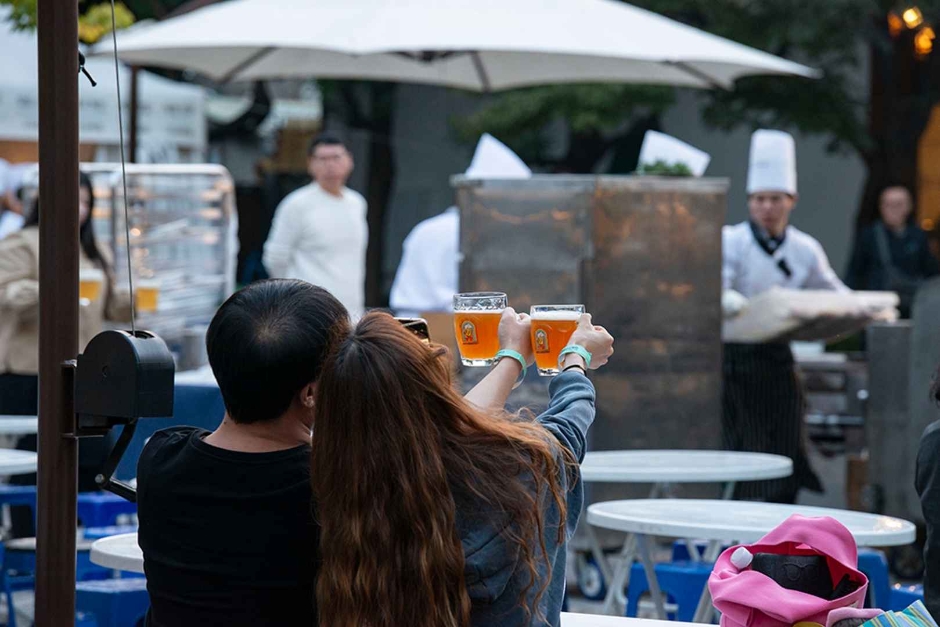Golden Dew - Lotte Centum City Branch [Tax Refund Shop] (골든듀 롯데센텀)
16.2Km 2024-04-23
B1, 59, Centum nam-daero, Haeundae-gu, Busan
-
Twee - Lotte Centum City Branch [Tax Refund Shop] (트위 롯데센텀)
16.2Km 2024-04-23
4F, 59, Centum nam-daero, Haeundae-gu, Busan
-
Galaxy - Lotte Centum City Branch [Tax Refund Shop] (갤럭시 롯데 센텀시티점)
16.2Km 2024-04-18
6F, 59, Centum nam-daero, Haeundae-gu, Busan
-
Esquire - Lotte Centum City Branch [Tax Refund Shop] (에스콰이어 롯데센텀)
16.2Km 2024-04-23
Daehyun Primall Busan, 786, Jungang-daero, Busanjin-gu, Busan
-
Zara - Lotte Centum City Branch [Tax Refund Shop] (자라 롯데센텀시티점)
16.2Km 2024-04-23
B1, 59, Centum nam-daero, Haeundae-gu, Busan
-
Lotte Department Store - Store Centum City Branch [Tax Refund Shop] (롯데백화점 센텀시티점)
16.2Km 2024-04-23
B1, 59, Centum nam-daero, Haeundae-gu, Busan
-
Beanpole - Lotte Centum City Branch [Tax Refund Shop] (빈폴 롯데 센텀시티점)
16.2Km 2024-04-18
6F, 59, Centum nam-daero, Haeundae-gu, Busan
-
Hurshimchung (허심청)
16.3Km 2024-07-05
23 Geumganggongwon-ro 20beon-gil, Dongnae-gu, Busan
+82-51-550-2200
Hurshimchung is a large-scale hot spring facility using natural hot spring water and lit by natural lighting through the ceiling. Known for its magnesium-rich hot spring water, it is believed to be beneficial for conditions such as neuralgia, cut wounds, back pain, and muscle aches. The facility includes large hot spring baths, saunas, restaurants, cafés, convenience stores, and massage shops. The hot spring baths feature various event baths using natural bathing ingredients and medicinal herb depending on the season. There are also various types of saunas, including charcoal sauna and red clay sauna.
Hurshimchung Bräu Oktoberfest (허심청브로이 옥토버페스트)
16.3Km 2024-09-04
23 Geumganggongwon-ro 20beon-gil, Dongnae-gu, Busan
+82-51-550-2511
Hurshimchung Bräu Oktoberfest takes place in early October at the outdoor space of Hotel Nongshim in Busan. The festival aims to create a fun experience for visitors of all ages, despite the main theme of the festival being beer. Enjoy special brews made by the brewmasters of Hurshimchung, as well as the tasty foods prepared by the chefs of Hotel Nongshim while watching a range of performances.
Olive Young - Centum Jungang-ro Branch [Tax Refund Shop] (올리브영 센텀중앙로 [사후면세점])
16.3Km 2024-04-18
Store #101, #102, 21, Centum 6-ro, Haeundae-gu, Busan
-

![Twee - Lotte Centum City Branch [Tax Refund Shop] (트위 롯데센텀)](http://tong.visitkorea.or.kr/cms/resource/63/2885563_image2_1.jpg)
![Galaxy - Lotte Centum City Branch [Tax Refund Shop] (갤럭시 롯데 센텀시티점)](http://tong.visitkorea.or.kr/cms/resource/91/2885591_image2_1.jpg)
![Esquire - Lotte Centum City Branch [Tax Refund Shop] (에스콰이어 롯데센텀)](http://tong.visitkorea.or.kr/cms/resource/15/2885615_image2_1.jpg)
![Zara - Lotte Centum City Branch [Tax Refund Shop] (자라 롯데센텀시티점)](http://tong.visitkorea.or.kr/cms/resource/75/2885575_image2_1.jpg)
![Lotte Department Store - Store Centum City Branch [Tax Refund Shop] (롯데백화점 센텀시티점)](http://tong.visitkorea.or.kr/cms/resource/87/2885587_image2_1.jpg)
![Beanpole - Lotte Centum City Branch [Tax Refund Shop] (빈폴 롯데 센텀시티점)](http://tong.visitkorea.or.kr/cms/resource/93/2885593_image2_1.jpg)


![Olive Young - Centum Jungang-ro Branch [Tax Refund Shop] (올리브영 센텀중앙로 [사후면세점])](http://tong.visitkorea.or.kr/cms/resource/23/2885623_image2_1.jpg)
 English
English
 한국어
한국어 日本語
日本語 中文(简体)
中文(简体) Deutsch
Deutsch Français
Français Español
Español Русский
Русский